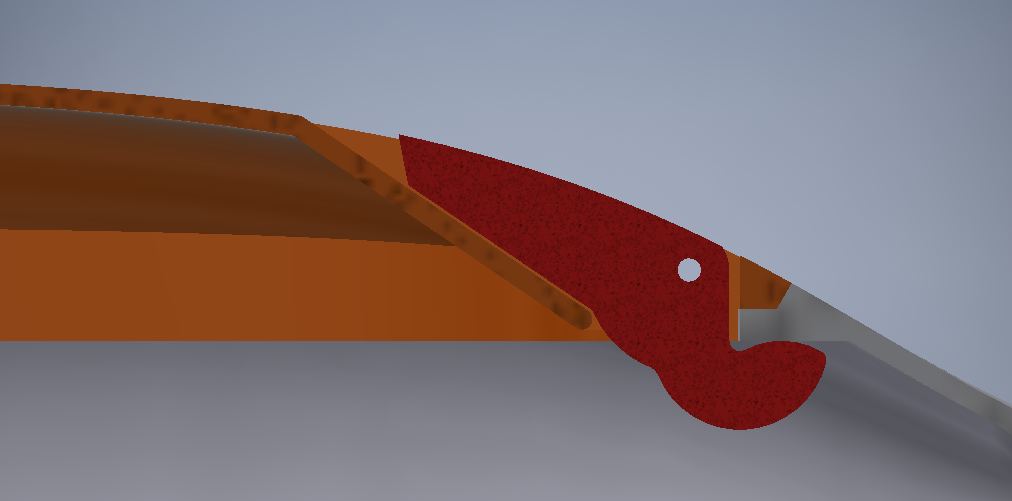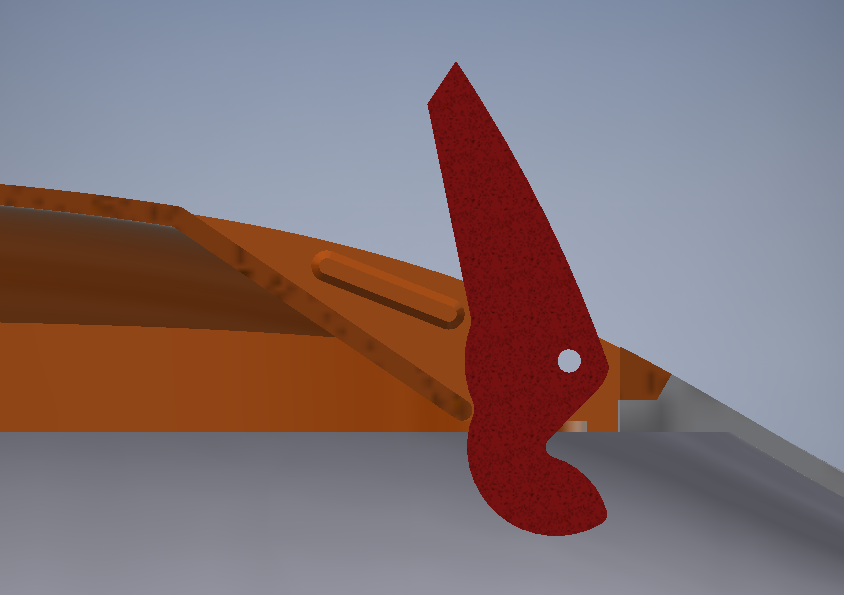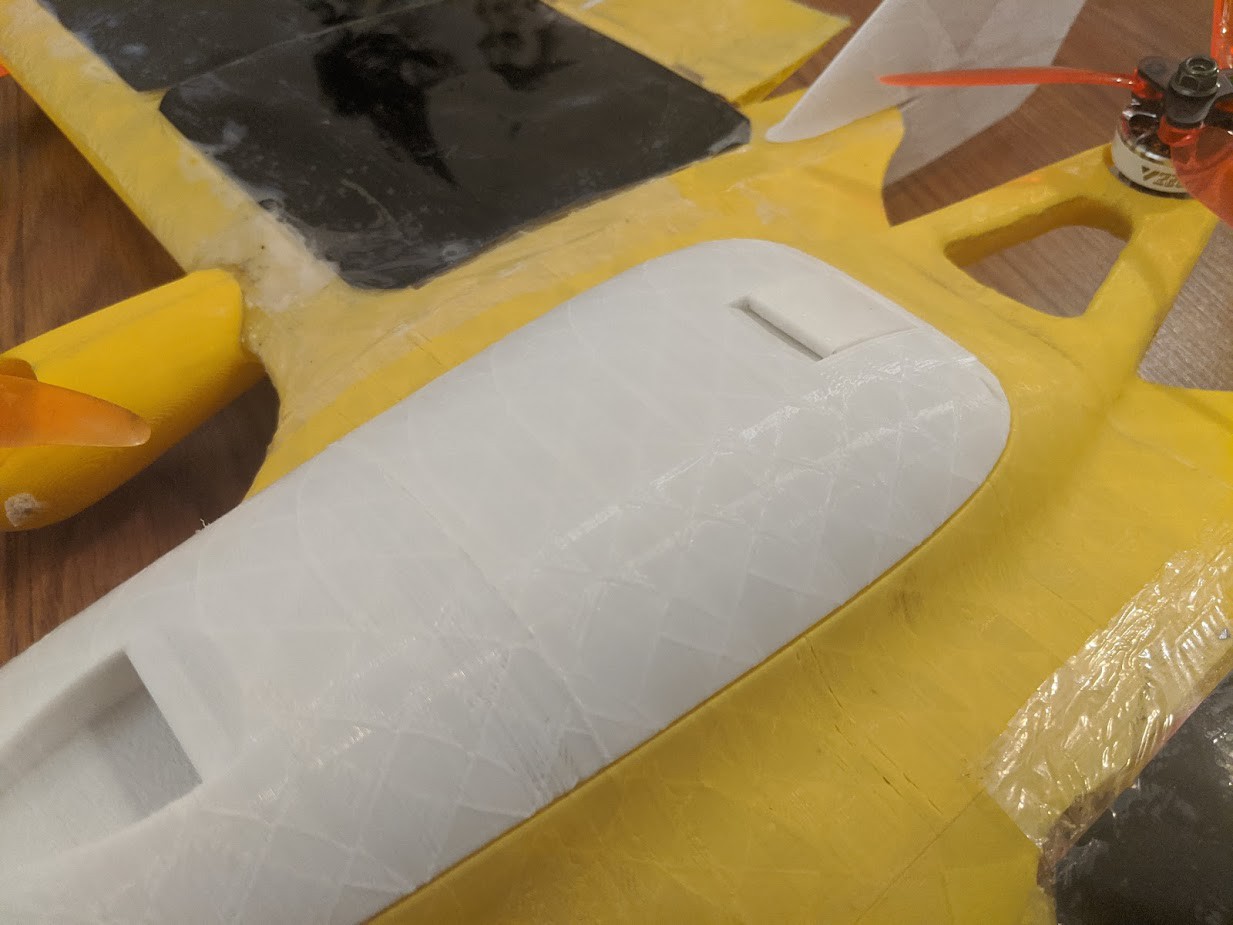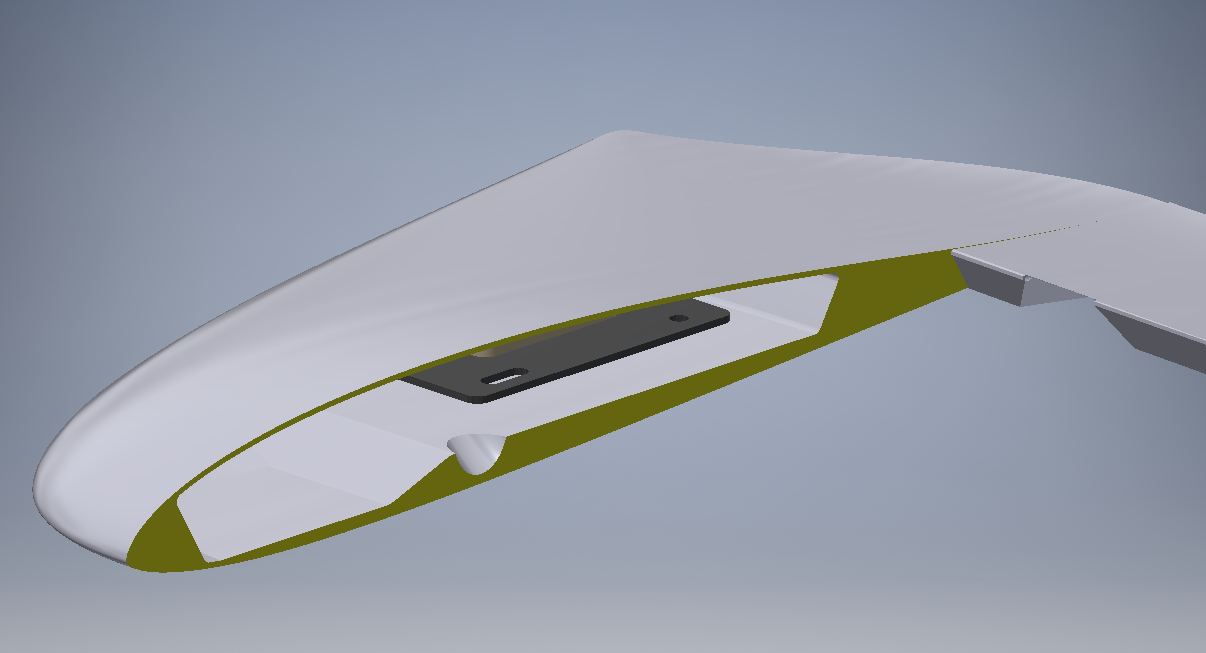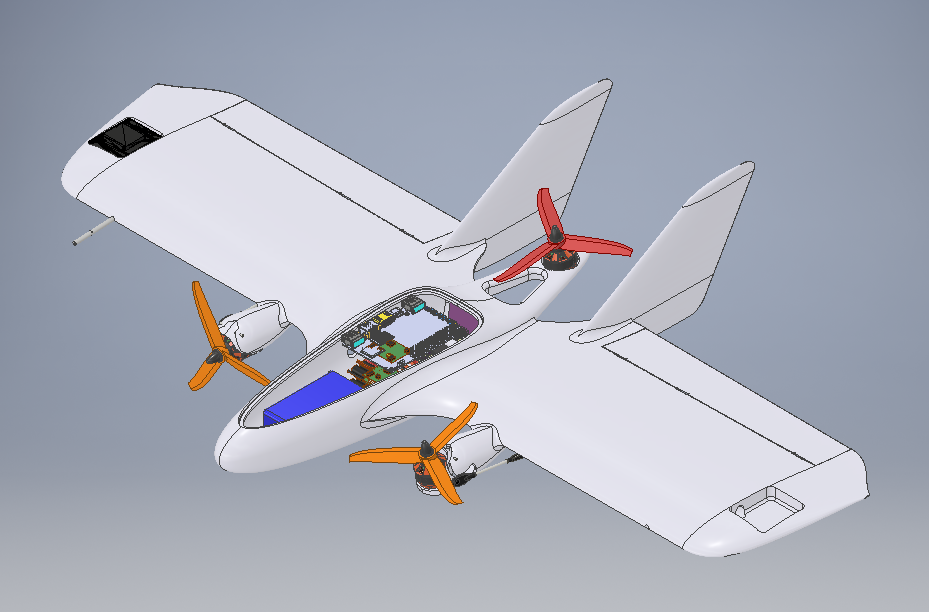-
Attack of the Clones!
01/19/2023 at 11:21 • 0 commentsGeneral Note: The GitHub Discussion and Issues sections generally have more activity, and I've generally preserved this Hackaday Project Log for the major updates. Ouch, sorry for nearly a year gap, but as promised, the MiniHawk design is stable, and I'm just holding on to some improvements such as a nicer FPV lid and such. But that isn't what I'm posting about here.
The MiniHawk got copied by China.
Naming the company and the illegitimate and unsanctioned copy of my work does not seem necessary here; perhaps as a kind of reverse-SEO measure, I bet that repeating the names here might only promote the popularity of the rip-off more than it would help to inform. Ok, lets try this: J-u-m-p-e-r is the company, and their rip-off is called the X-i-a-k-e-8-0-0. (Oh whatever, non-obfuscated names occur below.) My thoughts and requests to the community are detailed in my Discussion Post on the GitHub page here: GitHub Discussion .
The short version is that this Chinese company is mass-producing their own implementation of the MiniHawk-VTOL, reusing a substantial amount of the STLs that I released there on GitHub and which are mirrored here, which is against the Creative Commons License that the project is released under. This company only reached out to me after commenters and reviewers on YouTube called them out on their inappropriate reuse, and I probably could have done a better job and quickly and decisively getting ahead of it all, but I'm doing what I can when I have the time and energy for it. This company admitted to me that they "perfected" the MiniHawk, and that they are "sorry that it happened this way", ..... but mercy cannot rob justice, and being sorry about it does not make it ok.
Repeated here are the main points from the GitHub post here, and which I request that members of the community should observe:
- I'm sorry that I've taken so long to address this. Many have probably purchased the Xiake800 thinking that Jumper had reconciled with me. If you bought one without knowledge of the drama and issues, have fun with it; I want to share VTOL with everyone, even if this is a illegitimate product of my efforts. But now that you do know, if you have not purchased one, please don't, it is only enabling Jumper and others like them to get away with IP theft.
- I'm sorry that I wasn't able to "beat Jumper to market" so to speak; I know lots of people want to have a cool foam VTOL and skip the 3D printing stage, I sure want to! If you or someone you know has the expertise to do a foam-molded R/C plane kit, please get in contact with me, I'm still looking for and trying to figure out how to partner with someone one that can "do it right".
- Pressure Jumper to release all the Xiake800 manufacturing artwork, so as to at least satisfy the Share-Alike clause of the Creative Commons License that the MiniHawk is released under. That means at least the STLs for everything, but also possibly X_T and/or STEP versions of at least the canopy and nacelles. They actually have satisfied this so far as the canopy is concerned ArduPilot Discuss Thread, lets see them release all of it.
- Like, Share and Subscribe to my YouTube channel? I can't believe I just said that. Whatever, I'm just curious if my 300k subscriber statement in my response email might one day be realized? Share the MiniHawk-VTOL, try printing it, keep me stimulated with feedback and I will try to improve it.
- Make it known that Jumper reused my design without my consent and against the rules. Best analogy: Imagine that you are an artist, and you draw a really cool airplane drawing and post it to ArtStation or Instagram. Then one day you see your drawing on a kid's lunch box, and come to find out that someone in China saw your picture and decided to use it without telling you and is currently selling lots of lunch boxes with your drawing. That is my life right now.
-Steve
-
New Features: Latching Lid, Improved GPS Winglet, Balance Markers
02/01/2022 at 06:23 • 0 commentsThe project is in a minor limbo as I continue to add features, but as usual, I struggle to start the instructions rewrite and other supplemental items. Here are some of the new features that have already been added to the STL files on the GitHub repo:
Latching Lid Design
I've printed and tested a new lid latch design. The old version used the flexibility of the lid as the retaining means, but this was very temperamental to get on and off of the vehicle without doing damage. The old design also would tend to detach under significant maneuvering. The new version uses detent blister in the side-wall of the lid to capture the locking latch, which rests flush when secured. I've made this the default lid design, and this has been applied to the FPV and NACA-Vented lid variants.
![]()
![]()
Locked Unlocked ![]()
Improved GPS Winglet
Oops, I lied, this is not yet pushed to the GitHub repo as of this writing; I've tested a new winglet design that fully encloses the GPS and Pitot pressure sensor. It looks really slick, but it is a pain to assemble and makes accessing the GPS or Pitot sensor intractable without breaking plastic. The gains are worth it though: The GPS and pressure sensor are completely enclosed and weatherproofed.
![]()
Weight-and-Balance Hints
The bottom of the wing has a tactile "hint" marker at 28mm past the wing leading-edge, which is the optimal center-of-mass location. As usual, I will adamantly insist that the proper Jack-stand method be used with a digital scale, but for verifying the balance in the field, these markers should be useful.
![]()
Everything Else
- The New Zero-Torque Nacelles have exited Beta and have replaced the old design on the repo.
- The Vertical Stabilizers have guide grooves for the bottom "strake" to improve alignment.
So what is next? Version 2.1 will comprise all the above features, plus the build instructions rewrite + PDF, a proper project logo, and other marketing/branding elements. A few other features may sneak in, such as the mounting frame for a Single-Board Computer such as the Raspberry Pi.
A note on the community: At present, I am aware of 12 individuals who have attempted to build or are building their own MiniHawk-VTOLs. If you are trying to build one, please feel free to contact me; I'm happy to help and the feedback helps motivate me to keep pushing updates and to polish the design.
-
Beta Test of New Nacelle Design
11/01/2021 at 03:36 • 0 commentsAs hinted at in the release notes of Version 2 (almost a month ago), the current nacelle arm design inherits a flaw that has been present in the project from its earliest foundations in 2018 and 2019. The forward pair of motors are/were tilted with a four-bar linkage which placed a static torque load on the tilt servos. That linkage design has a failure mode in which the respective servo stalls when trying to pull the motor down/forward, and this results is a twirling vehicle when trying to perform a forward VTOL transition, or even when just aggressively hovering.
After several intensive days/weeks of CAD work, I have come to a stopping point on the nacelle redesign. While I am going to include these changes in the coming version 2.1 release of the project, I am trying to contact anyone and everyone who is building their own MiniHawk-VTOL to provide them the option to use the new arm design before encountering the "twirling issue" first hand. While I've printed prototypes of the new nacelle to confirm that it works and everything fits, I still need to test the entire thing on a flying vehicle, so this is very much a "beta". Here is a link to the STLs:
https://drive.google.com/drive/folders/14OMxRNMnFPUckKqzTNQ1_S6gNBs8WnNN?usp=sharing
Main changes and features:
- Support for 3x6x2.5mm ball bearings with 3mm shaft. The old 1.8mm metal pin option is also available.
- The tilt rotation axis for the motor is very closely aligned with the thrust axis of the motor. The torque effort by the servos should be very much alleviated compared to the old design.
Regards,
-Steve Carlson
-
Version 2 is Live!
10/03/2021 at 08:01 • 0 commentsThe MiniHawk-VTOL Version 2 design is up! As described in previous project posts, the new version has "MH7_" prefixing all the STLs and 3MF files. The local zip file here on Hackaday contains the essential files for producing the project, which consist of the README, supporting pictures, the configuration files for ArduPilot, and the STLs for all parts.
Special thanks to Danie Conradie for writing the awesome article that was published today (October 2); I had no idea that the project was picked for publication, and nor did I know it had hit the front page until I started getting pings from people on LinkedIn. The article is fair and well written; I suppose the only (minor) correction is that I (Steve Carlson) am the main and sole designer of the MiniHawk-VTOL project, and that its inception as an open-access migratory VTOL predates my start at the RoboWork lab at UNR. But I'm very thankful to my advisor and others here, who have embraced the project and encouraged me to complete it. The "Modular-Aspect-Ratio" implementation using two MiniHawk-VTOLs represents the first true research use case of the platform, and ownership of that work is fully and equally shared between research members. It has been a wild ride developing this project, and I am pleased that it is finally well-formed and progressing.
Sentimental narrative aside, lets dive into the changes that have been made, and the known issues and other instructions:
Changes from Version 1:
- Carbon-Fiber Spar integrated into the wing.
- Servo Wire routing is improved and more accessible.
- Longer Nose for better balance, with NACA vent ducts for better cooling.
- Larger Vertical Stabilizers, improved directional stability.
- Larger Motors can be accommodated, up to 29mm outside diameter.
- LED pockets in the tail, and better spacing for a 6-inch prop.
- Provisions for GPS and Video Transmitter mounting in the winglets.
- Jackpoint stations for aircraft display and Weight-and-Balance calculations.
- Pitot-tube mounting in either wing.
- Strengthened Motor mounts.
Known Issues and Mitigations:
- Transitions from hover to forward-flight are temperamental. This is a consequence of the tilt mechanism requiring static torque on the tilt servos during hover, and while the servos may be rated for a sufficient torque factor, the existing torsion may still stall one or both servos. A soft fix for this is to reduce the thrust during forward transition by dropping the nose or requesting a descent in the autonomous mission profile.
- Hinge pins on the nacelles can "creep" due to vibration, and should be glued or knurled to retain these in place.
- Tilt servo endpoints need to be adjusted to prevent prop-strike on the top of the nacelle arms. Related to issue #1 above, weaker-than-expected servos will result in the prop disc brushing the nacelles when under high load.
- Servo endpoints in the forward-flight case need to be carefully adjusted to avoid stalling servos against the forward-flight mechanical hardstops.
- The 6-inch prop on the tail can brush the vertical stabilizers when aircraft structures flex during harsh treatment. A few millimeters of space usually solves this.
- New Lid/Hatch designs are being created, a STEP version of the plain hatch is included for community modding.
- Servo arms cannot be removed unless the servos are debonded from the servo bays/pockets.
- Vibrations in the system need to be dampened where the flight controller is mounted. If the flight controller picks up harmonic resonance, this can result in the vehicle spontaneously doing a back-flip while hovering, as the vibration is interpreted as an extreme gyro or accelerometer reading.
Future Improvements and Features:
- The interface between the nacelle arms and the wing has been redesigned to force correct alignment, and will be introduced in the next update.
- A Center-of-Gravity Bump will be added to the wings for hand-estimation of Weight and Balance.
- A Single-Board-Computer mounting tray is being developed for holding the Raspberry Pi, Khadas VIM3 and other SBCs of similar form-factor.
- Provisions are being added to the wing for down-facing stereo cameras and LIDAR units such as the TFmini Plus.
- All build instructions and graphics will be redone at some point.
- A logo for the project is nearing final polish and release.
-
Still Alive and Evolving!
09/24/2021 at 19:52 • 0 commentsReports of the abandonment of this project have been greatly exaggerated! Over the past 5 months, I've been as saturated with research work as ever, and the Version 2 formal release is in the works, but not just yet. Please enjoy the videos at the end of this post to see what the MiniHawk-VTOL can do.
The GitHub Repo continues to be the bleeding-edge source for any revisions or modifications that are made to the design. The only changes to the design geometry between the soft/secret release in April up to now are minor changes to the empennage and the motor tilt mount. Otherwise, the design is nearly stable/frozen and has converged to a very usable aircraft. However, be ye warned! There are some issues that need to be addressed, and which will likely persist in the Version 2 release and will only be fully solved in Version 3. Specifically, the motor tilt mechanism is absolutely terrible! Even with nice HS-5065MG+ servos on the tilt mechanisms, the VTOL forward transition fails occasionally as the servos get stalled. This is because the linkage design requires static torque contributions by the tilt servos during hover, even through the servos are suppose to have more than twice the required torque. This manifests as uncommanded yaw and spinning when attempting to enter forward-flight.
-
Stealth/Silent Release of MH7 (v2.0)
04/28/2021 at 23:22 • 0 comments-shhhhhh- ...... I'm saturated with school work in my grad program, so I'm not going to be able to turn much attention to rewriting the instructions and such for a bit, and the formal release with all the pageantry and publicity and awesome video trailer will have to wait. Its been way more than "a few days" since the last update, but the project has finally stabilized enough that I feel confident in pushing the next-generation version of the MiniHawk-VTOL. The new STLs are anything prefixed with "MH7_" at https://github.com/StephenCarlson/MiniHawk-VTOL/tree/master/stl-SourceFiles .
The vehicle flies in forward-flight; smooth, sustained and continuously, if somewhat tippy. Read through https://github.com/StephenCarlson/MiniHawk-VTOL/issues/12 and https://github.com/StephenCarlson/MiniHawk-VTOL/issues/8 to see how the components have been re-positioned and how to use the balance stand platform to find the exact center of mass. The current vehicle is flying on ArduPilot using a PixRacerPro, using https://github.com/StephenCarlson/MiniHawk-VTOL/blob/master/cfg-Config/ArduPlane_MiniHawk_mRo_PixRacerPro.param .
Updates and full release to follow.
NB: The ControlHorn STL is missing, just use the MH5 ControlHorn, same thing.
-
MiniHawk-VTOL MH7 (v2.0) Teaser
04/06/2021 at 21:39 • 1 commentTeaser for the next version!
Coming soon, to the GitHub repo and this project page, a new variant approaches!
Featuring the following improvements:- A shaft for a Carbon Fiber spar up to 7mm in diameter!
- Support for front motors of up to 28mm outside diameter (29mm if you are brave).
- Wire routing improvements, no more struggling with wires stuck in tunnels!
- Larger vertical fins with full integration!
- Separately-installed wingtips with large pockets which should enable various telemetry and GPS modules.
- Improved building and joining surfaces.
- A lengthened nose and improved component placement for perfect Center of Gravity.
- Larger volume for avionics, improved mounting stanchion placement and diameter(s).
- Pitot-tube mount with correct angle-of-incidence.
- Other various improvements.
Arriving in a few days, stay tuned!
-
Initial Release
10/16/2020 at 05:06 • 0 commentsThe GitHub repo is now public. Current Feature-Complete artwork is tagged as v1.0.0. Hello World!
Check it out! https://github.com/StephenCarlson/MiniHawk-VTOL
-
Pre-Release
10/08/2020 at 20:40 • 0 commentsThe MiniHawk project exits stealth-mode soon, but for now, the GitHub repo is private, and thus the project STL build files are unreleased at this moment. I'll be filling in the build instructions and other details in the mean time.
MiniHawk VTOL
A fully 3D-Printable VTOL aircraft, designed as a hybrid fixed-wing plank + tricopter planform. For FPV and UAV experimentation.
 Steve Carlson
Steve Carlson